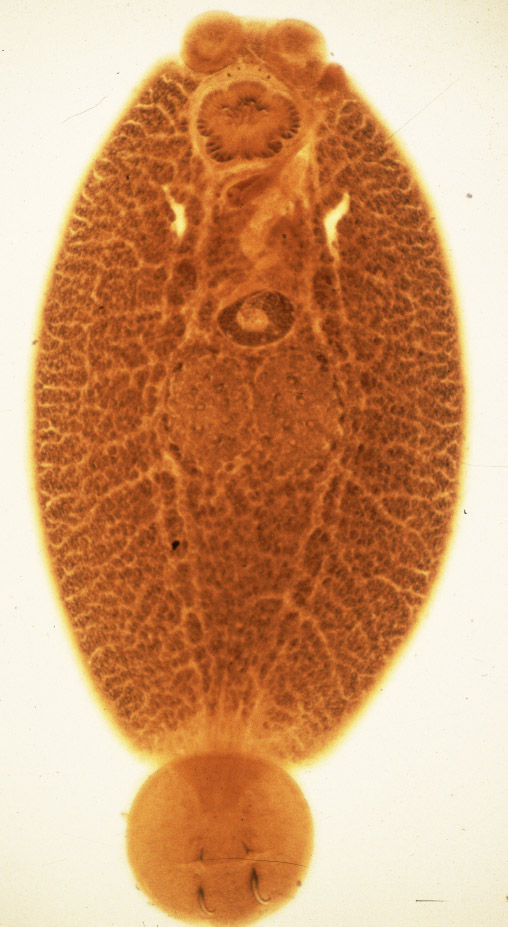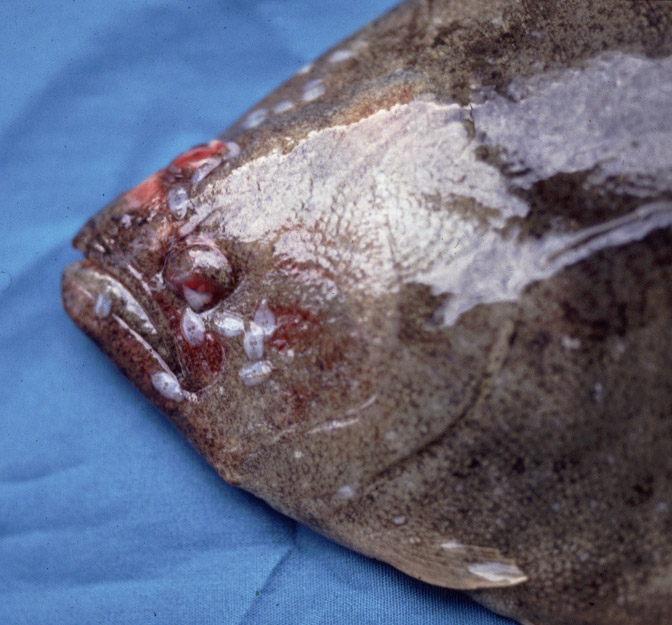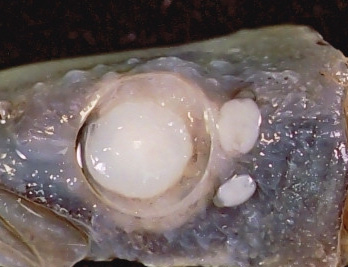


| Parasite | Neobenedenia girellae |
|---|---|
| Taxonomy | Plathyhelminthes, Monogenea, Monopisthocotylea |
| Hosts | Yellowtail (Seriola quinqueradiata), Greater amberjack (Seriola dumerili), Yellowtail amberjack (Seriola lalandi), Almaco jack (Seriola rivoliana), Tiger puffer (Takifugu rubripes), Japanese flounder (Paralichthys olivaceus), Red sea bream (Pagrus major), Japanese sea bass (Lateolabrax japonicus), White trevally (Pseudocaranx dentex), Leopard coaralgrouper (Plectropomus leopardus), Hong Kong grouper (Epinephelus akaara), Malabar grouper (Epinephelus malabaricus) Cobia (Rachycentron canadum) |
| Infection site | Skin |
| Clinical signs | The parasite (about 3-6 mm) is observed on the body surface. The lesion is erosive and the mucus is excessively secreted. Irritation by the parasite causes the affected fish to scratch their body on the net, resulting in the skin wounds. |
| Parasitology | Neobenedenia girellae (body length (adult) 3-6 mm) is flat and oval. The parasite attaches to the host by a haptor with 2 pairs of anchors at the posterior end and a pair of suckers at the anterior end. The hermaphroditic adult produces eggs with filamentous threads. The eggs hatched on 4 days at 27-30 C.; 5-6 days at 25 C.; 7 days at 20 C.; 8 days at 18 C, but never hatched (for even 3 weeks) at 15 C. The parasite develops from eggs to adults for 15-17 days at 25 C. (Bondad-Reantaso et al., 1995a). Thus, N. girellae is thermophilic. The parasite has a broad host range (reported in 15 cultured marine fish) (Ogawa, 2004). |
| Pathology | N. girellae causes the retardation of growth following to low feeding. The lesion is eroded by attaching of the haptor and wounded by feeding of the parasite. Secondary infection occurs since bacteria invade through the wounding site resulted from the scratching on the net (Ogawa, 2004). |
| Health hazard | Since this parasite is not infectious to human, it is harmless in food hygiene. |
| Diagnosis | The parasite can be identified by morphological observation in a flattend preparation. Neobenedenia girellae can be distinguished from Benedenia seriolae, a monogenean infecting to Seriola spp., by the morphology. B. seriolae is larger (body length 5-12 mm). Furthermore, the anterior structure between two suckers is concave and convex in N. girellae and in B. seriolae, respectively (Kinami et al., 2005). |
| Other information |
In Japan, Neobenedenia girellae infections to cultured Japanese flounder and cultured tiger puffer were reported for the first time in 1991. It is considered that N. girellae was introduced from China since imported greater amberjack fry was infected with this parasite (prevalence up to 70.0 %) (Ogawa et al., 1995). It is recommended to kill the parasites at the body surface by the freshwater-bathing for 5-10 minutes (longer when water temperature is low) and to regularly change the net for the purpose of removing the entangled eggs. Currently, bath treatments with a hydrogen peroxide solution and oral administration of praziquantel can be used to control the parasite. An acquired protection against secondary infection with the parasite was demonstrated in primed Japanese flounder (Bondad-Reantaso et al., 1995b). |
| References | Bondad-Reantaso, M.
G., K. Ogawa, M. Fukudome and H. Wakabayashi (1995a): Reproduction and Growth
of Neobenedenia girellae (Monogenea: Capsalidae), a skin parasite of cultured marine fishes of Japan.
Fish Pathol., 30, 227-231.
Bondad-Reantaso, M. G., K. Ogawa, T. Yoshinaga and H. Wakabayashi (1995b): Acquired protection against Neobenedenia girellae in Japanese flounder. Fish Pathol.,30, 233-238. Kinami, R., J. Miyamoto, T. Yoshinaga, K. Ogawa and Y. Nagakura (2005) A practical method to distinguish between Neobenedenia girellae and Benedenia seriolae. Fish Pathol., 40, 63-66. Ogawa, K., M. G. Bondad-Reantaso, M. Fukudome and H. Wakabayashi (1995): Neobenedenia girellae (Hargis, 1955) Yamaguchi, 1963 (Monogenea: Capsalidae) from cultured marine fishes of Japan. J. Parasitol., 81, 223-227. Ogawa, K., J. Miyamoto, H.-C. Wang, C.-F. Lo and G.-H. Ko (2006): Neobenedenia girellae (Monogenea) infection of cultured cobia Rachycentron canadrum in Taiwan. Fish Pathol., 41, 51-56.. Ogawa, K. (2004): Monogenean diseases. In: Infectious and parasitic diseases of fish and shellfish. (eds. by Wakabayashi, H. and K. Muroga), Koseisha koseikaku, pp.353-379 (In Japanese). |

Fig. 1. Japanese flounder parasitized by N. girellae.
Fig. 3. Eye infection of N. girellae in cobia.
(Photos by K. Ogawa)
Fig. 2. A stained specimen of N. girellae